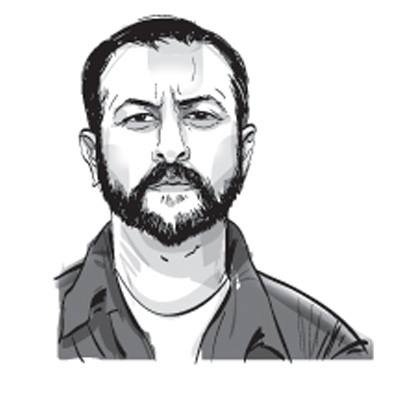IIT Kharagpur Boy, Who Chose To Become “Compasswaalah†after IIT!
Rohit Gupta studied chemical technology at IIT Kharagpur. But unlike his peers, Rohit chose to become a writer, artist, science- historian and storyteller which he sums up in a word called– ‘Compasswaalah’.
Jaipur born Rohit and now based in Mumbai, he has pursued his dream of discovering the culture and concepts that shape mathematics and science. “It is now my full time profession too,” said Rohit, who is now extending his research work to the people through unconventional workshops, which involves documentary films and conversations.
His shows ranges from 3-D printing technology in solid geometry of 16th century Germany to the relationship of moon, sea, and seashells to supernovae attracting artistes, writers, filmmakers and students among others from across the cities.
He makes science and maths easy for the laymen. “Earlier, the scientists were writing for the commoners but not anymore,” said Rohit, adding, “I want people to learn math and science again but not the way we all had learnt in schools,” who explains the stories of golden era of Islamic astronomy (800- 1200 AD), also the Kerala school of astronomy (1100- 1600 AD) and further the culture of astronomy in Japan, China, and Africa in his shows.
The 37- year- old highlights the work of Radhanath Sikdar who was employed as a “human computer” for the Great Trigonometric Survey of India in 1840 and Sawai Jai Singh who built Jantar Mantar in Jaipur.
Well, so what is really the history behind his nickname- Compasswaalah? Rohit, citing The Great Arc, written by John Keay, said, “The Compasswallah is 18th century slang used for two British surveyors George Everest and William Landton, who went around mapping India from Kanyakumari to the Himalayas. That was the most ambitious Trigonometric Survey of their time and the two cartographers gave the world the measurement of the exact curvature of the Earth.”
But how did it all start? It all started from IIT Kharagpur, as that is where Rohit realised that the culture of competitiveness was destroying his imagination. Thus he finished the B. Tech course just to get a degree and decided to pursue writing instead.
Rohit came to Mumbai in 2000 and started writing screenplays and columns. To run his kitchen, Rohit joined a software company till disillusionment hit him again. So, he went back to Jaipur in 2007 and cocooned himself till he emerged as Compasswaalah three years ago.
His latest initiative, called the ZetaTrek, is hugely engaging hobbyists from across the world to solve Riemann Hypothesis, which is a long- pending mathematical problem.
Compasswaalah Tales
Till the Transit of Venus in 1761, Earth’s distance to the sun was undiscovered. Expeditions were sent to the North and South poles, to determine the distance during the Transit of Venus in the 19th century, and astronomers came to Mussoorie and Madras, for this. India played such a pivotal role to resolve a long- standing problem in astronomy.
Meanwhile, Indian sailors were already using compass which was noted by Vasco Da Gama in 1497.
A wide spectrum of scientific pursuit existed in colonial India. Hindu astrologers, Muslim almanac, French Jesuit missionaries, officers of the East India Company, and others participated as hobbyists and adventurers in global projects such as observing the Transit of Venus.

I wonder why some people find this sad (as shown by the poll)! This is a fascinating story!